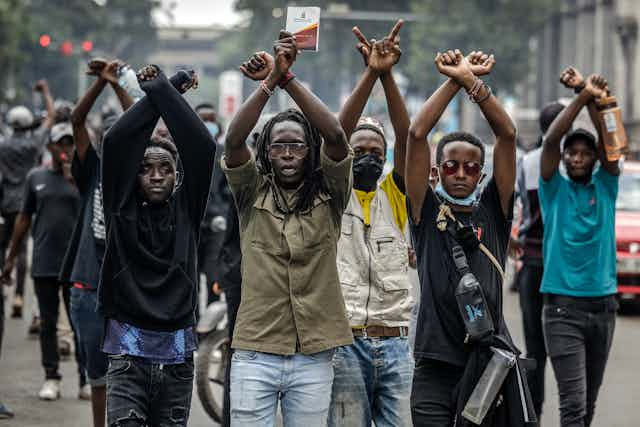
By Kennedy Oketch (Freelance Journalist)
In June of this year the year 2024, young activists voiced their frustrations against systemic corruption, rampant unemployment, and government failures. What began as a peaceful expression of discontent quickly escalated into a nationwide crisis, fueled by a deep-seated anger and despair among the youth.
HOW IT ALL STARTED
Initially sparked by online protests that went viral, the demonstrations gained momentum following the controversial passage of the 2024 Finance Bill by Parliament, the movement transitioned from digital activism to the streets, where thousands gathered to demand change. What started as a well-organized civil rights movement soon devolved into chaos. The protests drew a diverse crowd, including young women who would typically prefer leisure activities, highlighting the widespread discontent. Tragically, the situation turned deadly; among many casualties and victims chanted likes heroes one unforgettable Rex Kanyike Masai, who succumbed to gunshot wounds while protesting in central Nairobi. Reports indicate that over 60 people lost their lives, with hundreds more injured and properties destroyed. Activists accused law enforcement of these deaths and abductions and also use of excessive force, while the government did not only denied responsibility for the same but accused a third-party participant the “goon zees”. Govenrmnet or goonzees, “wapiganapo fahali wawill ni nyasi humia” translated as the grass bares the pain of horse fights.
ESCALATION AND CONSEQUENCES
The aftermath of the protests was marked by fear and uncertainty. Members of Parliament and government officials who supported the Finance Bill faced direct threats and violence. MPs and senators were attacked and beaten and properties burned.

For instance, a government official in Laikipia was physically assaulted, illustrating the volatile atmosphere. Many officials, lacking police protection were forced to consider fleeing the country or seeking asylum abroad for fear for their lives and safety.
One such example is Winnierose Wangui, a public officer in Laikipia County. She lost her home—filled with cherished memories—to an enraged mob during the protests.
Seeking refuge with friends, she quickly discovered that no place was safe for as long as her identity was known to her enemies. Threatening messages flooded in, accusing her of complicity in government failures and demanding her departure from Laikipia or else face dire consequences. This stark reality forced her to confront a painful truth: remaining in Kenya could mean signing her own death warrant, as her association with the government had turned her into a target.
The Road Ahead Victims and Casualties
As tensions continue to rise amid economic hardships, many young people on social media are expressing that their fight is far from over. No change, no compensations for victims or casualties. The potential for further unrest looms large, as the echoes of past violence, reminiscent of pre-post-election crisis based on what we witnessed, resurface in the minds of many Kenyans. The situation remains precarious, and the call for justice and accountability persists among the youth, signaling that the struggle for change in Kenya is just beginning.